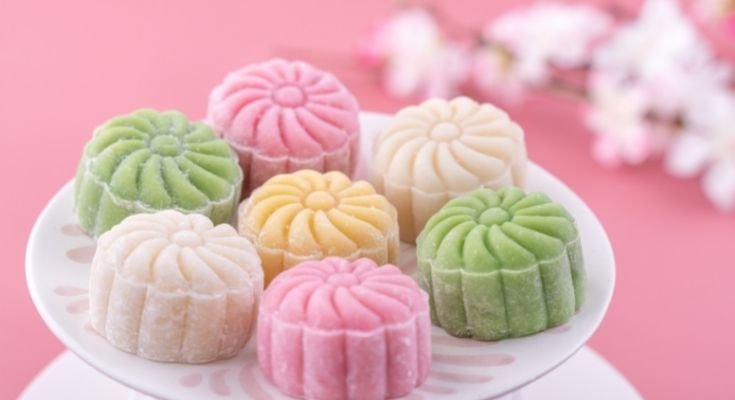Mooncakes have been an essential part of Chinese culture for centuries, especially during the Mid-Autumn Festival. Among the many variations of mooncakes, the snow skin mooncake stands out for its soft, chewy texture and pastel-colored appearance. In this article, we will delve into the history of snow skin mooncake and its evolution over time.
What are Snow Skin Mooncakes?
Snow skin mooncakes are non-baked mooncakes that originated from Hong Kong. Unlike traditional mooncakes, which have a baked pastry crust, snow skin mooncakes have a thin layer of chewy, translucent rice flour skin that resembles snow. They are often filled with a variety of sweet and savory fillings, such as lotus seed paste, red bean paste, durian, and even cheese.
The Origins of Snow Skin Mooncakes
Snow skin mooncakes first appeared in Hong Kong in the 1980s, invented by a chef named Lee Kam Sheung. The chef was inspired by the traditional mooncakes and wanted to create a version that would appeal to younger generations. He experimented with different types of dough and eventually came up with a recipe for a soft, delicate skin made from glutinous rice flour, which he named “snow skin” because of its snow-like appearance.
Evolution of Snow Skin Mooncakes
Over time, snow skin mooncakes gained popularity in Hong Kong and other parts of Asia. The traditional flavors of lotus seed paste and red bean paste were still prevalent, but new fillings were introduced to cater to different tastes. For example, green tea and black sesame fillings were added to create a more modern twist.
In recent years, snow skin mooncakes have become even more popular as people look for healthier and less sweet alternatives to traditional mooncakes. Bakeries and restaurants have started to offer snow skin mooncakes with low-sugar, low-fat, and even vegan options. Some bakeries have also introduced snow skin mooncakes with unique fillings, such as salted egg yolk custard and champagne truffle.
Significance of Snow Skin Mooncakes
Snow skin mooncakes have become more than just a popular dessert; they are now a symbol of creativity and innovation in Chinese cuisine. They represent the fusion of traditional and modern culinary techniques and reflect the changing tastes and preferences of consumers.
During the Mid-Autumn Festival, families and friends come together to share mooncakes and celebrate the reunion of loved ones. Snow skin mooncakes are often given as gifts, as their soft texture and delicate appearance make them a favorite among people of all ages.
FAQs
Snow skin mooncakes have a thin, chewy rice flour skin, while traditional mooncakes have a baked pastry crust. Snow skin mooncakes are also typically less sweet and have a softer texture.
Lotus seed paste and red bean paste are the most popular traditional fillings for snow skin mooncakes, but newer flavors like green tea, black sesame, and durian are gaining popularity.
Snow skin mooncakes should be kept refrigerated and consumed within a few days of purchase, as they contain fresh and perishable ingredients.
Yes, snow skin mooncakes can be made at home using a variety of recipes and fillings. However, making snow skin mooncakes requires some specialized equipment and ingredients, such as glutinous rice flour and mooncake molds.
Mooncakes are an important part of the Mid-Autumn Festival, which is a traditional Chinese holiday that celebrates the harvest and the reunion of family and friends. The round shape of mooncakes symbolizes completeness and unity, and they are often given as gifts to express gratitude and affection.
Conclusion
The history of snow skin mooncakes is a testament to the ingenuity and adaptability of Chinese cuisine. From a simple recipe invented by a Hong Kong chef to a popular dessert enjoyed by millions of people around the world, snow skin mooncakes have come a long way in just a few decades. Their soft, chewy texture and delicate appearance make them a favorite among young and old alike, and their ever-evolving flavors reflect the changing tastes and preferences of consumers.

